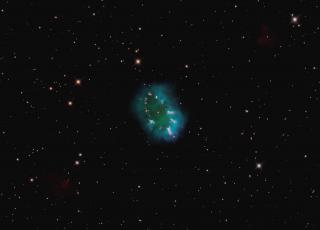Bibcode
Mohr-Smith, M.; Drew, J. E.; Barentsen, G.; Wright, N. J.; Napiwotzki, R.; Corradi, R. L. M.; Eislöffel, J.; Groot, P.; Kalari, V.; Parker, Q. A.; Raddi, R.; Sale, S. E.; Unruh, Y. C.; Vink, J. S.; Wesson, R.
Bibliographical reference
Monthly Notices of the Royal Astronomical Society, Volume 450, Issue 4, p.3855-3873
Advertised on:
7
2015
Citations
28
Refereed citations
25
Description
O and early B stars are at the apex of galactic ecology, but in the
Milky Way, only a minority of them may yet have been identified. We
present the results of a pilot study to select and parametrize OB star
candidates in the Southern Galactic plane, down to a limiting magnitude
of g = 20. A 2 deg2 field capturing the Carina Arm around the
young massive star cluster, Westerlund 2, is examined. The confirmed OB
stars in this cluster are used to validate our identification method,
based on selection from the (u - g, g - r) diagram for the region. Our
Markov Chain Monte Carlo fitting method combines VPHAS+ u, g, r, i with
published J, H, K photometry in order to derive posterior probability
distributions of the stellar parameters log (Teff) and
distance modulus, together with the reddening parameters A0
and RV. The stellar parameters are sufficient to confirm OB
status while the reddening parameters are determined to a precision of
σ(A0) ˜ 0.09 and σ(RV) ˜
0.08. There are 489 objects that fit well as new OB candidates, earlier
than ˜B2. This total includes 74 probable massive O stars, 5
likely blue supergiants and 32 reddened subdwarfs. This increases the
number of previously known and candidate OB stars in the region by
nearly a factor of 10. Most of the new objects are likely to be at
distances between 3 and 6 kpc. We have confirmed the results of previous
studies that, at these longer distances, these sight lines require
non-standard reddening laws with 3.5 < RV < 4.
Related projects

Bipolar Nebulae
This project has three major objectives: 1) To determine the physico-chemical characteristics of bipolar planetary nebulae and symbiotic nebulae, to help understanding the origin of bipolarity and to test theoretical models, mainly models with binary central stars, aimed at explaining the observed morphology and kinematics. 2) To study the low
Antonio
Mampaso Recio